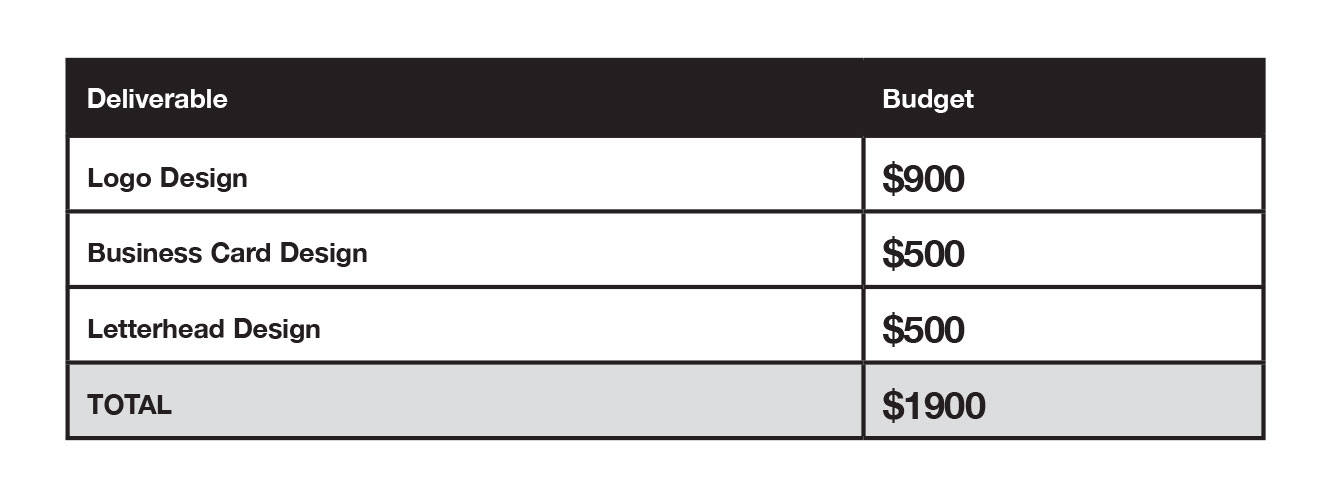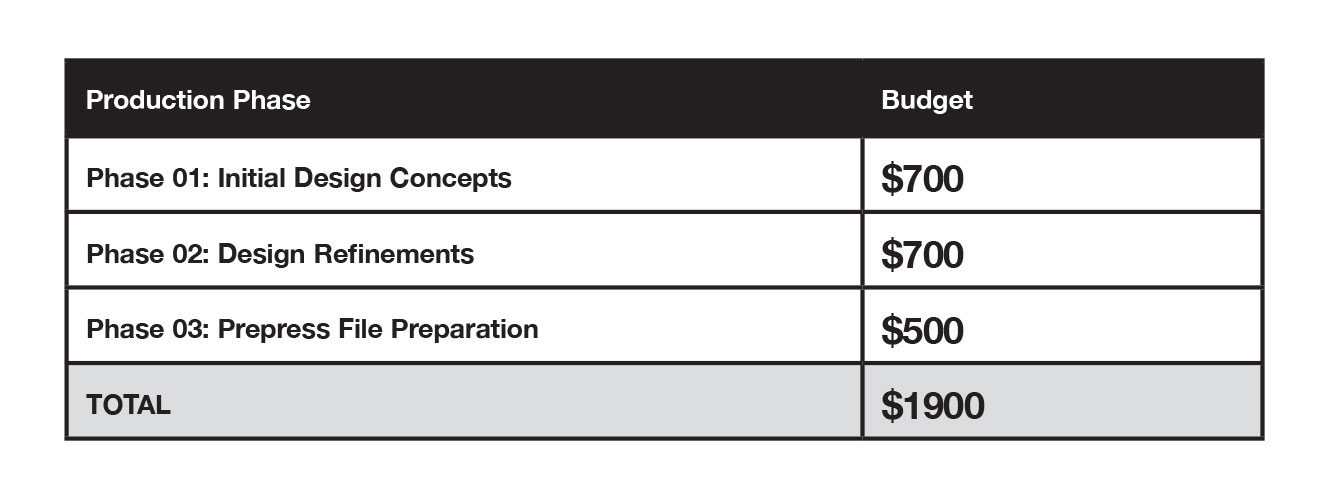When I started my design agency in 2002, I was a moderately accomplished designer, but a very novice businessman. I had never learned how to craft a proposal, price a project, invoice a client, or any other important business practices. As a result, I made mistakes that cost me money. One of the mistakes I made was the manner in which I proposed project prices.
My logic was that the client would be more apt to sign-off on the lump sum price if they could see the smaller numbers that added up to it.
For example, if a client was requesting a logo design, business cards, and a letterhead, I would gauge how much I “felt” I should charge for the work and propose a price for each item. If I decided to charge $1,900 for the project, I would breakout my price in a manner like this:

Well, it didn’t take me long to realize this strategy was flawed as it backfired on me over and over again. Inevitably, the client would see the line-item prices and say, “Thank you for the proposal, we have decided not to do the letterhead design and to go with just the logo and business cards for $1,400.”
I realized when analyzing the price, my client’s inner dialogue would likely be something like this, “Ok, $900 for the logo. We definitely need that. Hmmm…the business cards are $500, well,l we have to have those. $500 for the letterhead? That’s a bit expensive for just a letterhead we will rarely use. We can live without the letterhead and do this project cheaper.”
After a few financial losses relating directly to this flawed strategy, I adapted. Following the same objective of breaking down a high ticket item into more palatable prices, I began creating line-item prices for elements the client could not cut out of the project. Rather than breaking down the price by deliverables, I would break down the price by project phases. Let’s look at how this is done using the same scope of work for a logo, business card design, and letterhead.

The first phase would be “Initial Design Concepts.” This phase would include the initial comp ideas for the logo and show examples of how the logo concepts could transition into business card and letterhead designs. A client looking at this phase could not say, “We decided to wait on the initial design concepts and do that later.” This is a phase that cannot be removed.
The next phase would be something like “Design Refinements.” I would explain in my proposal this phase included taking one of the logo concepts and refining it into a final logo design, along with the business cards and letterhead. Again, the client could not remove this item.
After that phase, I might include a phase called “Prepress File Preparation.” This is another item that cannot be extracted by the client. Of course, they will need and want press ready files!
This approach changes the client’s inner dialogue to sound something like, “Hmmm…initial design concepts are $700, that sounds about right. Of course we need design refinements for $700. The final prepress prep is only $500, that’s cheaper than I thought it would be. I guess $1,900 is a good price. I see how they arrived at that number.”
Clients tend to agree on a bigger total price tag when they see how you arrived at the price; however, make sure your price breakdown only includes line-items not easily omitted from the project.
If you’d like to learn A LOT more about this strategy, my courses include in-depth instruction about how I phase priced projects for identity, print, and website projects. It also includes lessons and strategies about how to price each phase in a way that helps you increase your prices and move you up the value chain. This strategy alone will probably yield a positive ROI on the course content within your first project or two. (Oh, and to top of the lessons about phasing projects, I also provide all my proposal and contract templates in the courses. The whole thing is really turnkey and easy for your to implement in your business.)












